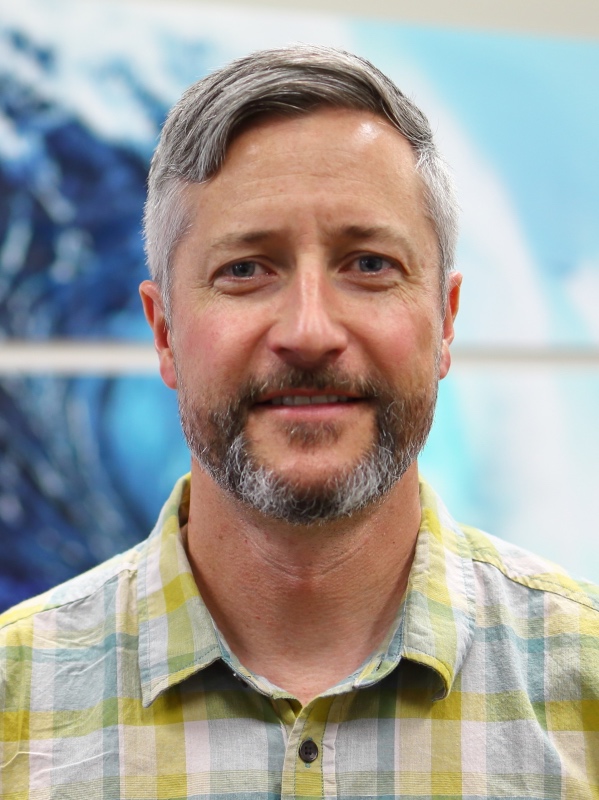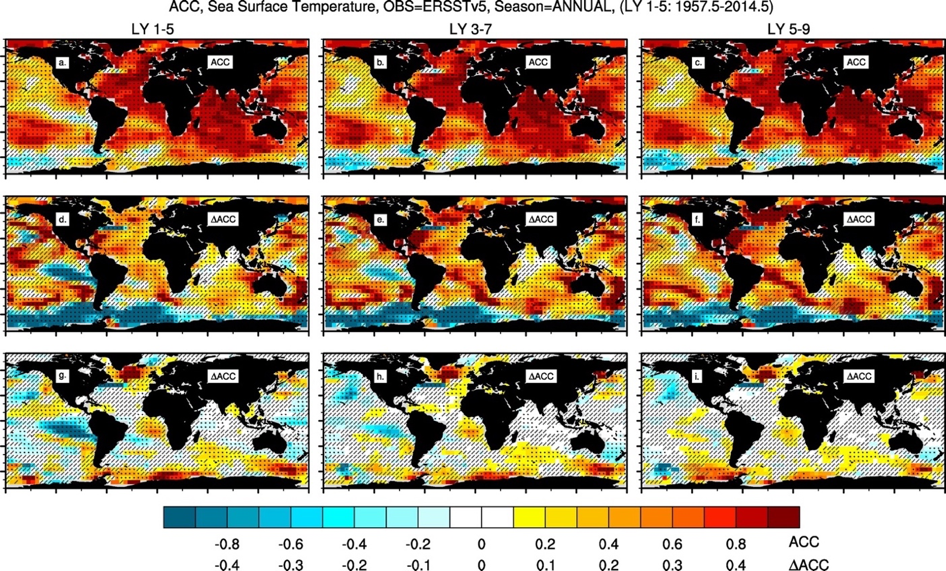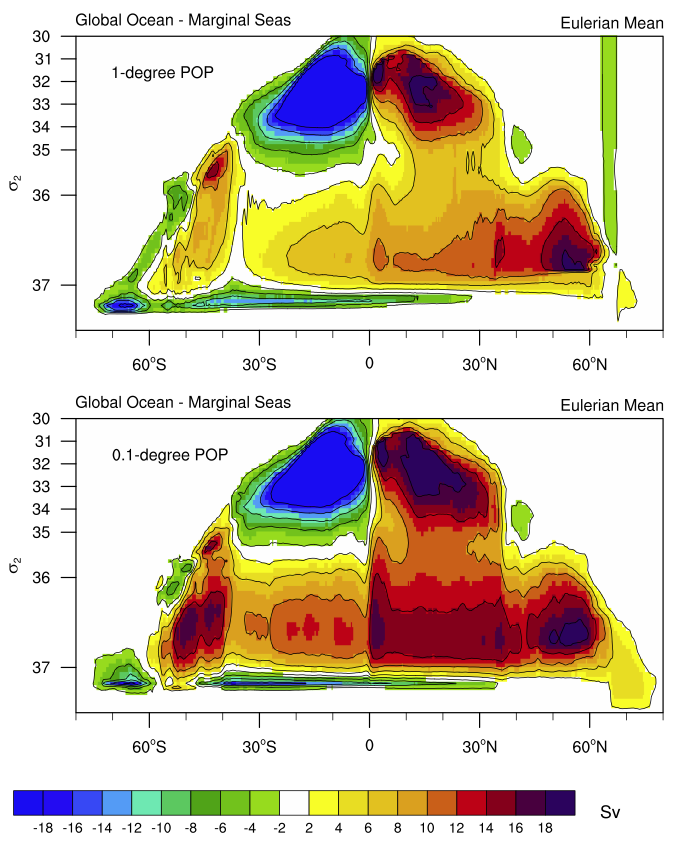Project 2: High-resolution ensemble CESM decadal climate prediction
Project Leaders

Yeager (NCAR)

Saravanan (TAMU)
Project Objective
On the time scale of a few years to a decade, future regional and seasonal variations in weather patterns and climate, and their corresponding impacts, will be strongly influenced by both the natural, internal variability and the externally forced climate change signal. This reality has guided many efforts to predict the climate on these time scales as a combined initial value and boundary value problem, using the information inherent in the current state as well as in the forced signal to optimize the projection of the climate over the next 5-10 years. NCAR has recently carried out a decadal prediction large ensemble (DPLE) experiment using the low-resolution CESM (Yeager et al 2018). This 40-member decadal prediction ensemble shows promising skills in predicting SST, upper ocean heat content and hydroclimate over the North Atlantic sector and some other areas (Figure). However, efforts to use coupled climate models to predict decadal variations in the climate system are still in their infancy and many formidable scientific and technical challenges exist.
The objective of this research project is to test a working hypothesis that enhancing CESM horizontal horizontal resolution to include frontal- and meso-scale ocean-atmosphere interactions will lead to a better representation of the coupling between ocean and atmosphere in the mid and high latitudes, which will increase model predictive skills and improve predictions at seasonal-to-decadal time scales.

Figure 1. (a)–(c) ACC of annual SST from CESM-DPLE relative to ERSSTv5 observations (Huang et al. 2017) for lead times of 1–5, 3–7, and 5–9 years, respectively. ACC skill score differences (d)–(f) between CESM-DPLE and persistence and (g)–(i) between CESM-DPLE and CESM-LE. All fields were mapped onto a 5° x 5° grid prior to analysis. The scale used for (d)–(i) is half that used for (a)–(c). The absence (presence) of a gray slash indicates scores that are (are not) significant at the 10% level (α = 0.1); stippling further indicates points whose p values pass an FDR test for global (70°S–70°N) field significance (αglobal = 0.1). (After Yeager et al. 2018)
Research Plan
To test this hypothesis, we will carry out an ensemble of high-resolution CESM decadal prediction runs (hereafter CESM-DP-HE) that are similar in design to the low-resolution CESM DPLE experiment. These prediction runs will be initialized by output of multiple cycles of 60 year simulation from 1958 to 2018 of the high resolution CESM ocean-ice model forced by JRA-55 reanalysis dataset. Given that this is a highly computationally costly experiment, we designed the following two-phase experiment strategy to complete the CESM-DP-HE:
- First phase of CESM-DP-HE: We will conduct decadal predictions every other years from November 1, 1979, and each ensemble of predictions will contains 5 members.
- Second phase of CESM-DP-HE: Depending on the outcomes of the first phase, we will either increase the ensemble size from 5 to 10, or fill in the rest of the years while keeping the ensemble size at five (Figure).

Figure 2. 2-phase design of CESM-DP-HR. Phase 1 starts on every November 1 of odd years with an ensemble of 5 decadal runs (blue). Phase 2 either fills in all the remaining even years from 1979 to 2018 (red) or doubles the ensemble size of phase 1.
Project Time Table
Year 1
- Complete the cycle 2&3 of the high resolution 60-year ocean-ice simulation.
- Analyze and compare low- and high-resolution ocean-ice simulation.
- Begin the first phase of CESM-DP-HE.
Year 2-3
- Complete the first phase of CESM-DP-HE.
- Analyze and publish the results of the first phase of CESM-DP-HE.
- Begin the second phase of CESM-DP-HE.
Year 4-5
- Complete the second phase of CESM-DP-HE.
- Analyze the entire CESM-DP-HE.
- Publish all the results from CESM-DP-HE.
Progress and Current Status
A new high-resolution (HR) forced ocean and sea-ice (FOSI) simulation using the ocean component from the latest release of the Community Earth System Model (CESM2) has been conducted. The HR FOSI simulation utilizes the 0.1-degree POP2 ocean model and the 0.1-degree CICE5 sea ice model, and is forced at the surface with the new JRA55-do v1.4 atmospheric state fields (Tsujino et al. 2018). The two forcing cycles (1958-2018) has been completed and the third cycle is currently running on Lonestar5 at TACC. The FOSI third cycle will be used as initial conditions for iHESP HR decadal prediction experiments—a technique that has shown considerable promise in coarse-resolution prediction systems (e.g., Yeager et al. 2018). Compared to the coarse-resolution FOSI simulation, the HR simulation shows many improvements. Figure 3 shows that the eddy-resolving model exhibits a much stronger meridional overturning cell associated with North Atlantic Deep Water with greater connectivity to the Southern Ocean.

Figure 3. Global annual-mean MOC (Eulerian component) in sigma2 coordinates for years 1999-2018 of the first forcing cycle from (top) LR FOSI and (bottom) HR FOSI.
Research & Projects
ResearchModeling ToolsProject 1: High-resolution CESM present and future climate simulationsProject 2: High-resolution ensemble CESM decadal climate predictionProject 3: High-resolution ocean model improvement and development Project 4: Development of R-CESM and online nesting capability for CESMProject 5: Development of online coupled data assimilation capability for R-CESM and CESM
